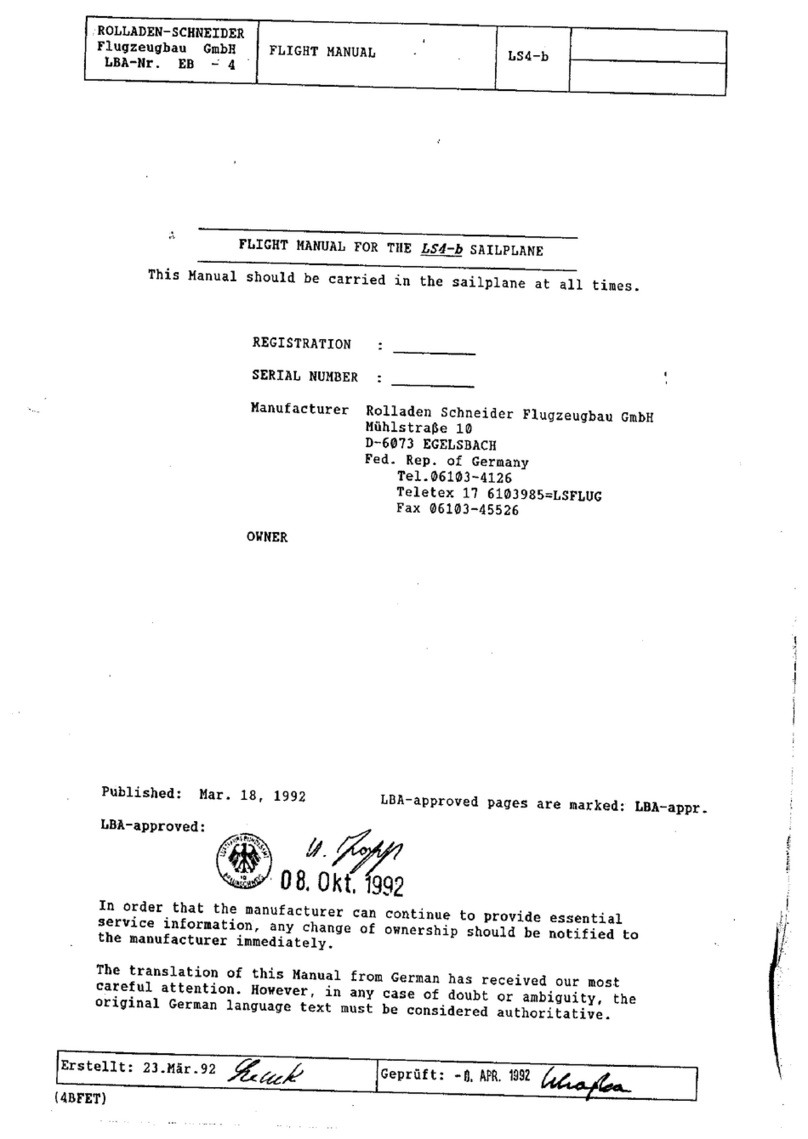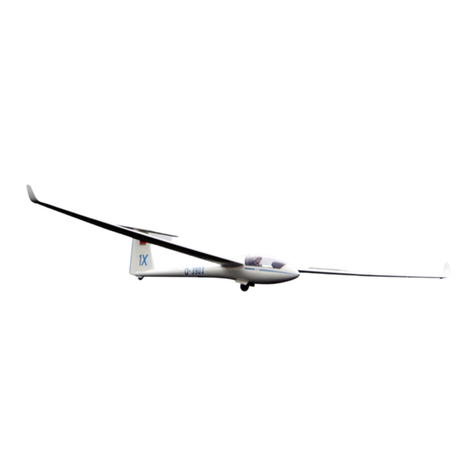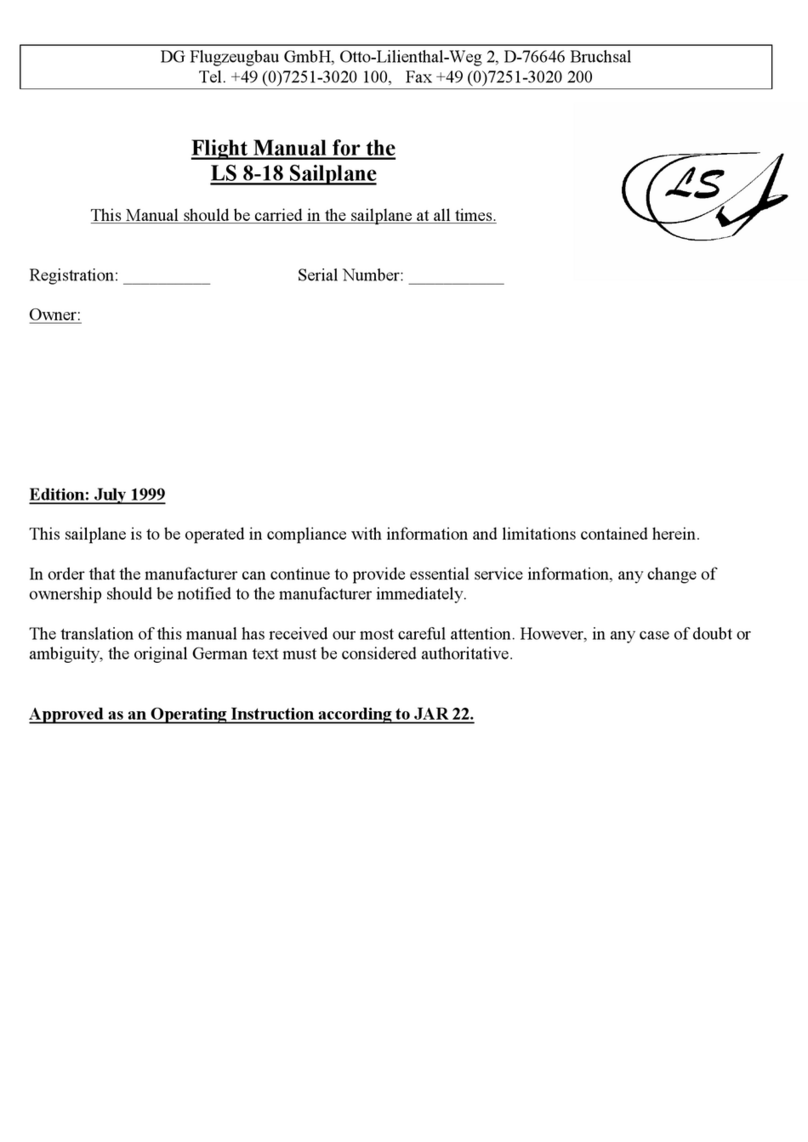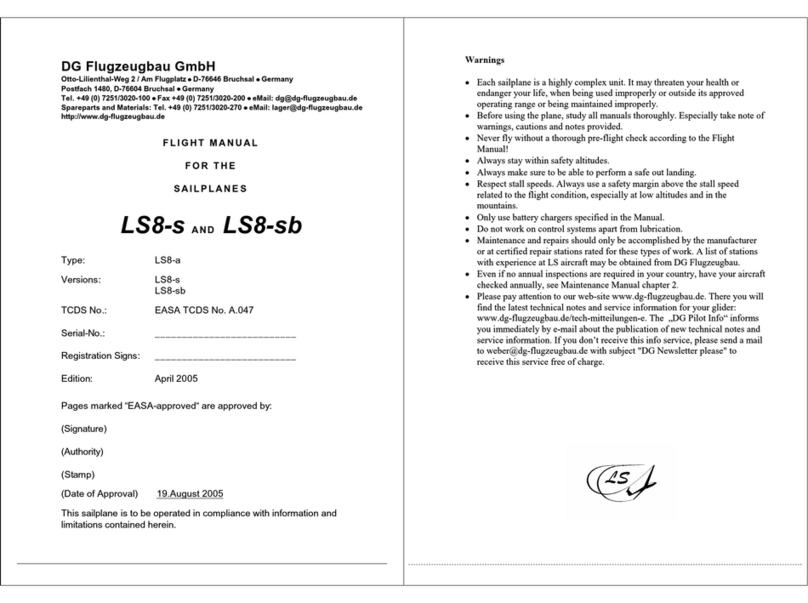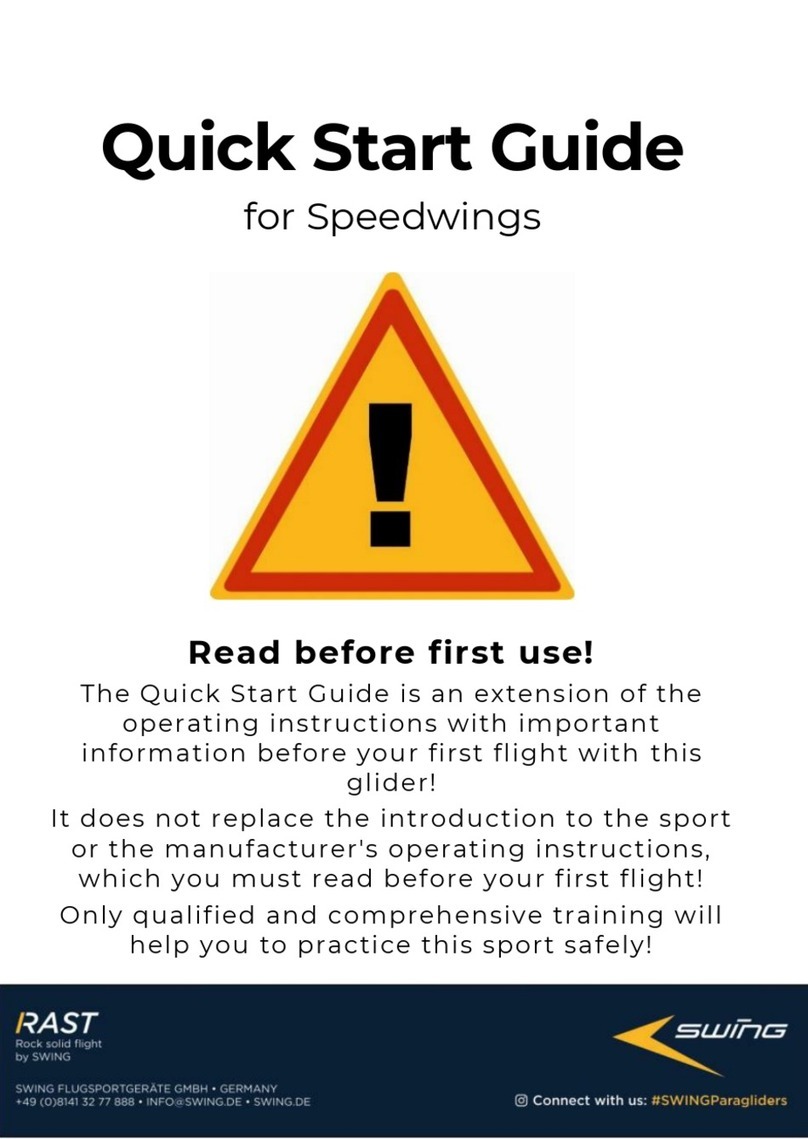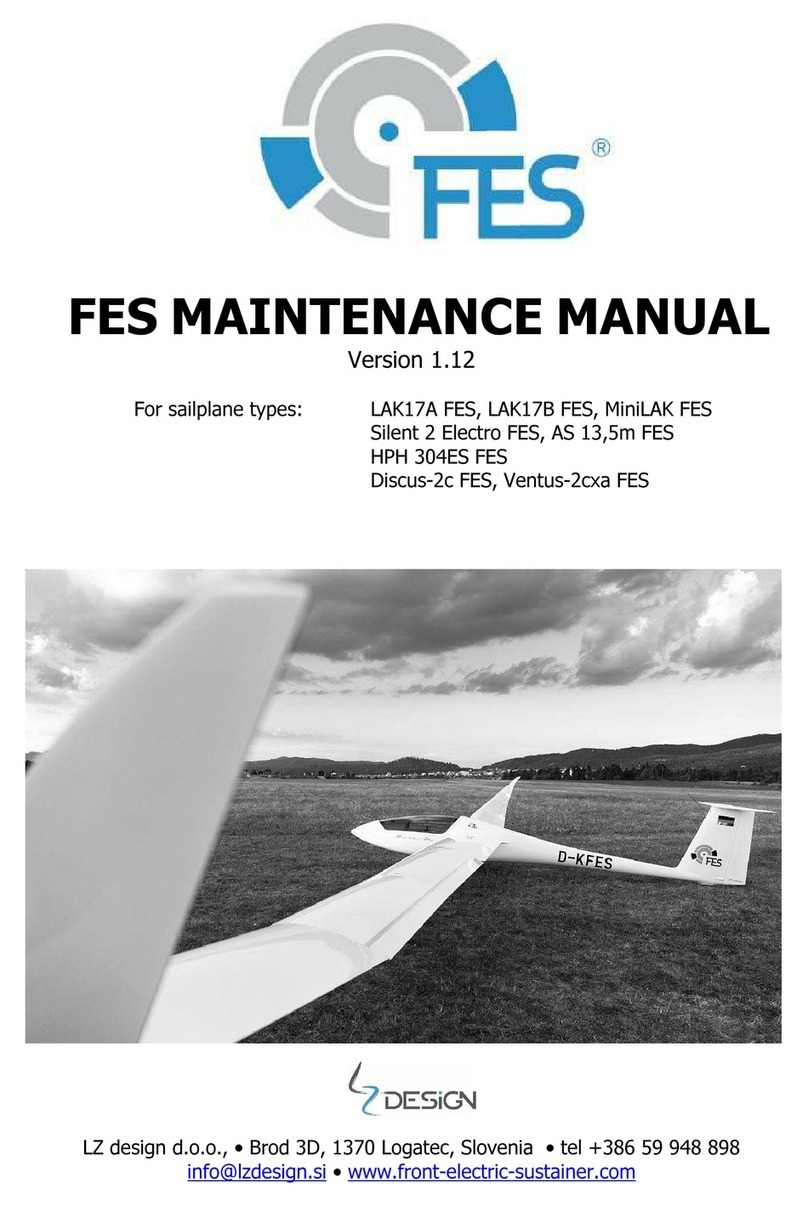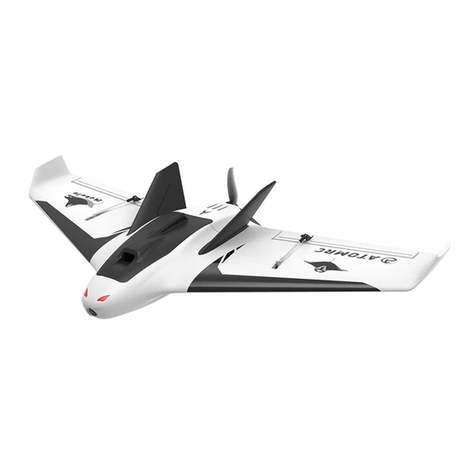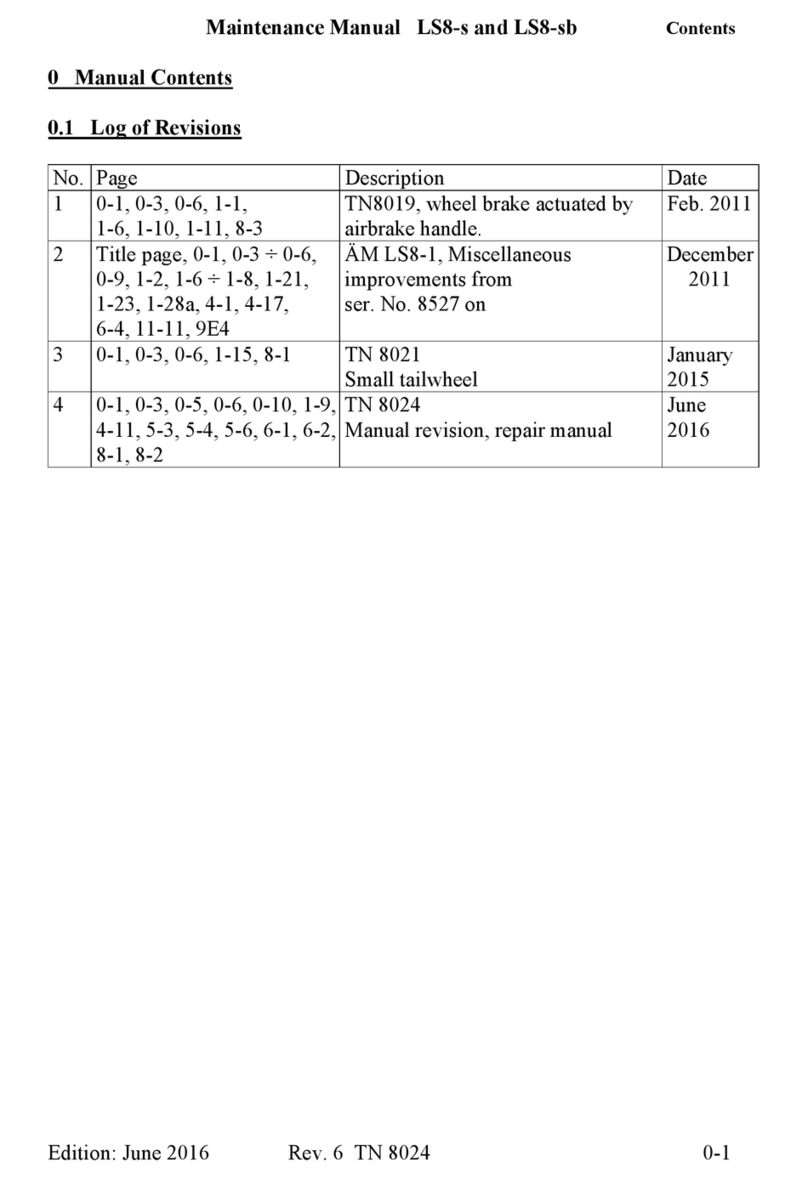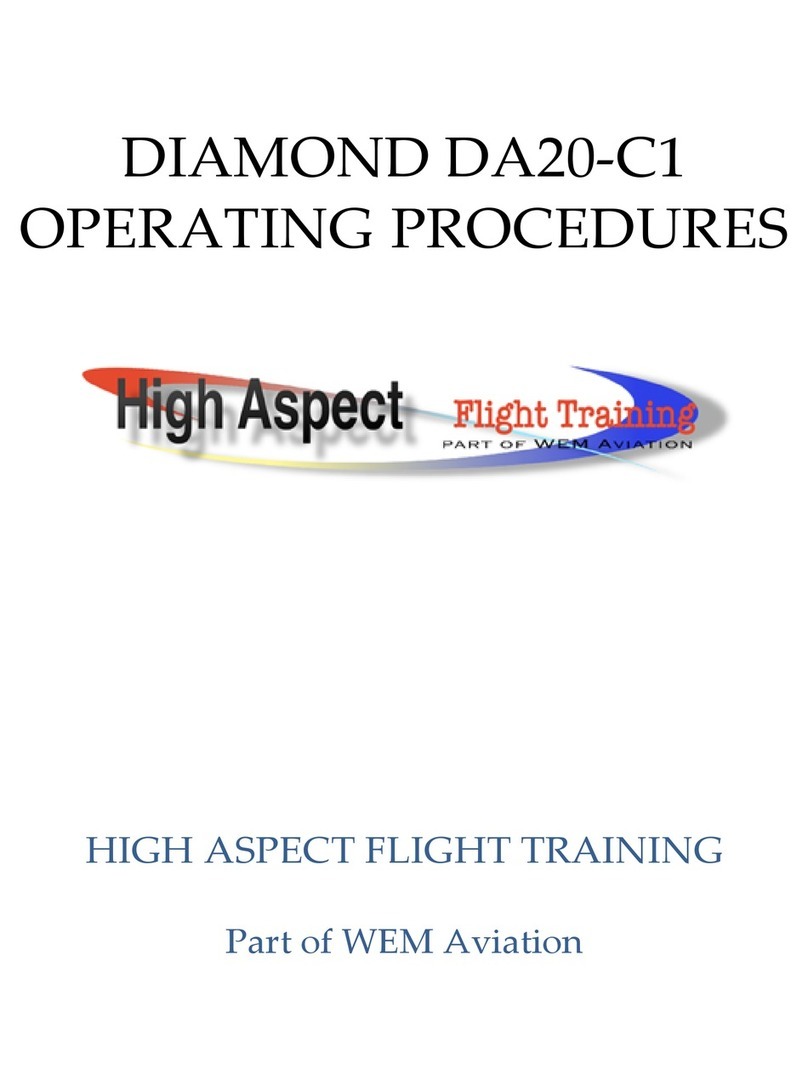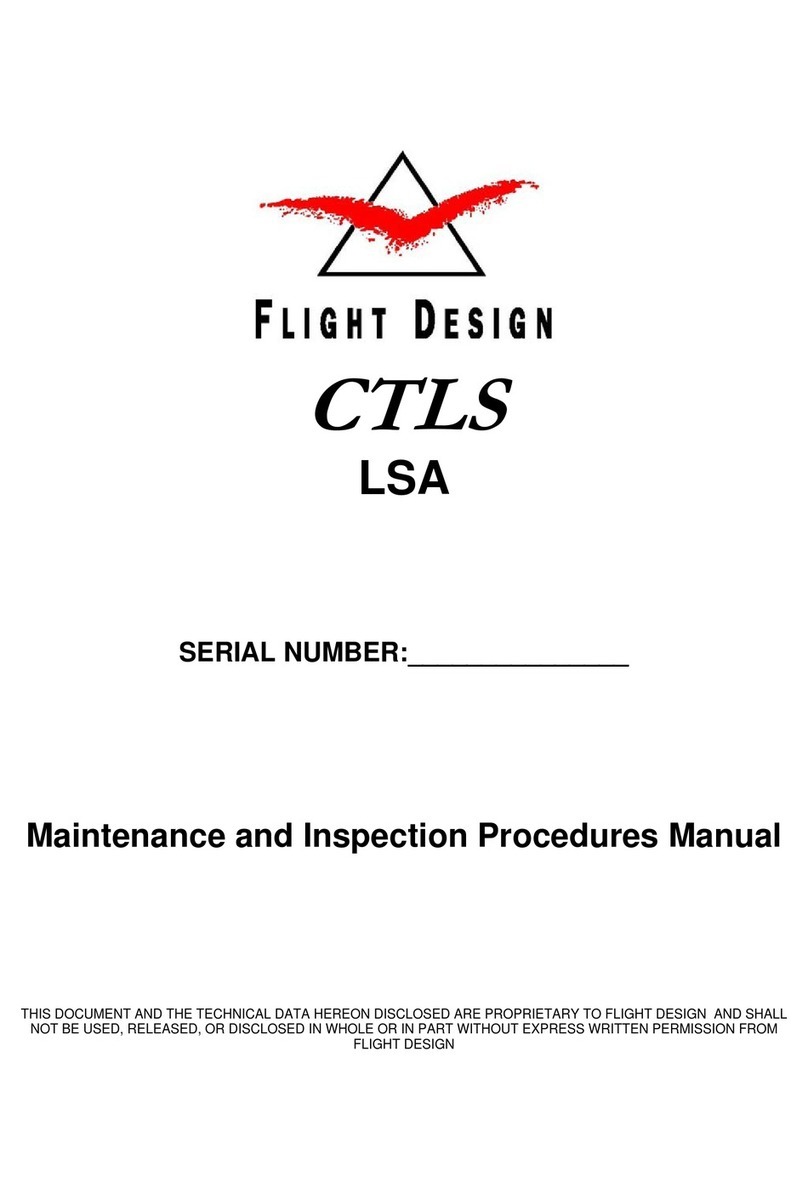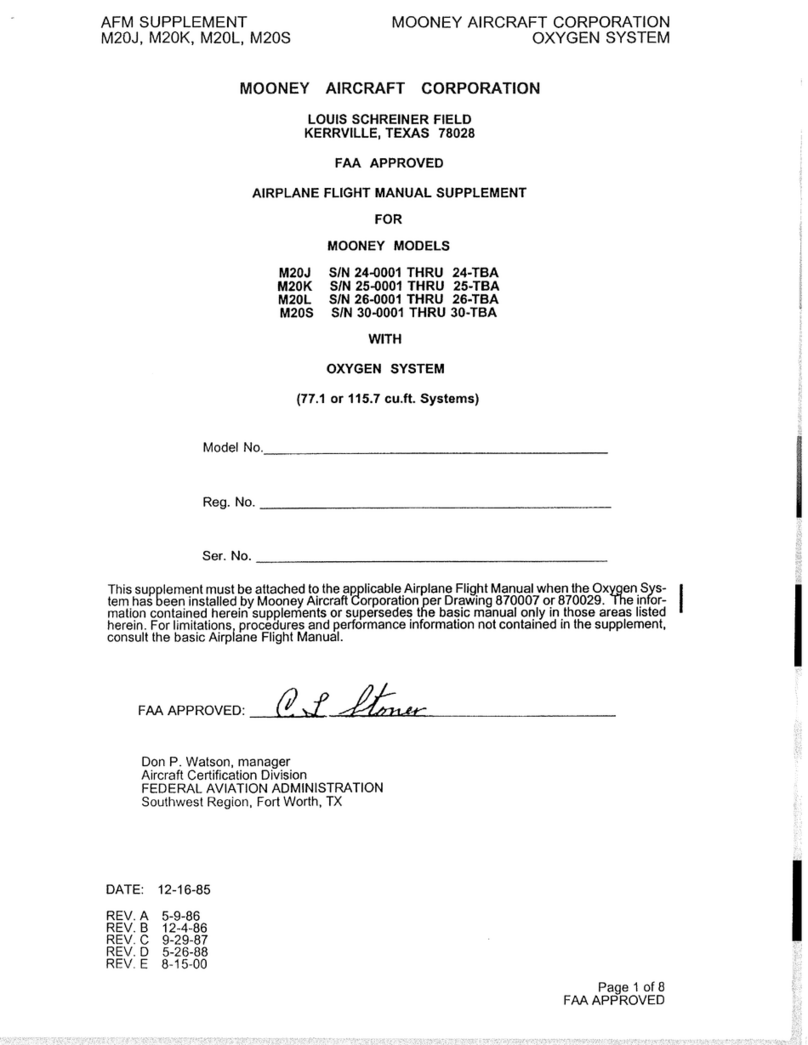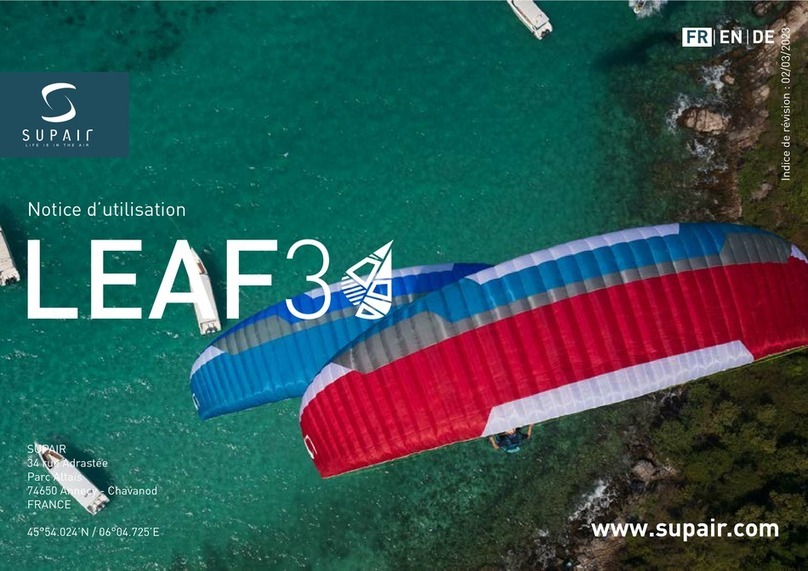Rolladen-Schneider LS 4-a Technical specifications

G-CLYE 4548
Deeside Gliding Club (Aberdeenshire) Ltd
Aboyne Airfield
ABOYNE, AB34 5LB

Flight Manual LS4-a General
Issued: February 2019 TN 4049 Page 1-1
Log of Revisions
Any revision of the present manual, except actual weighing data, must be
recorded in the following table and in case of approved sections endorsed by the
responsible airworthiness authority.
The new or amended text in the revised page will be indicated by a black
vertical line in the right hand margin, and the revision No. and the date will be
shown on the bottom of the page.
Rev.
No.
Pages affected Date of
issue
Approval Date of
approval
Date of
insertion
Signature
1 Cover, 1-1, 1-2,
2-4, 2-5
Jan. 5,
1984
2 1-1, 1-2, 4-6,
4-10
Oct.
1999
LBA 4.11.99
3 1-1, 1-2, 3-1, 4-2
TN4032 Rev. 1
Oct.
2010
EASA 3.11.2010
4 1-1, 1-2, 1-4, 2-3,
remove pages 6-3
÷ 6-5
TN LS-S-01
May
2011
EASA 2.09.2011
5 1-1, 1-2, 3-1, 4-2
TN4032 Rev. 1
May
2011
EASA 28.09.2011
6 1-1, 1-2, 1-5, 2-3,
9-0, 9-8 – 9-12
TN4049
Febr.
2019
EASA 8.04.2019

Flight Manual LS4-a General
Issued: February 2019 TN 4049 Page 1-2
Page Issue Date Current / TN Page Original Current / TN
Title Jan. 5, 1984
1-1 Oct. 1999 Febr. 2019/TN4049 6-1 Nov.15,1983
1-2 Oct. 1999 Febr. 2019/TN4049 6-2 Nov.15,1983
1-3 Nov.15,1983 6-3 Nov.15,1983
R
emoved / LS-S-01
1-4 Nov.15,1983
M
ay 2011 / LS-S-01 6-4 Nov.15,1983
R
emoved / LS-S-01
1-5 Nov.15,1983
F
ebr. 2019/TN4049 6-5 Nov.15,1983
R
emoved / LS-S-01
1-6 Nov.15,1983 6-6 Nov.15,1983
1-7 Nov.15,1983
7-1 Nov.15,1983
2-1 Nov.15,1983 7-2 Nov.15,1983
2-2 Nov.15,1983
2-3 Nov.15,1983
F
ebr. 2019
/
TN4049 8-1 Nov.15,1983
2-4 Jan. 5, 1984 8-2 Nov.15,1983
2-5 Jan. 5, 1984 8-3 Nov.15,1983
2-6 Nov.15,1983 8-4 Nov.15,1983
2-7 Nov.15,1983 8-5 Nov.15,1983
8-6 Nov.15,1983
3-1 Nov.15,1983 May 2011/4032 Rev. 2
3-2 Nov.15,1983 9-0 Febr. 2019 4049
9-1 Nov.15,1983
4-1 Nov.15,1983 9-2 Nov.15,1983
4-2 Nov.15,1983 May 2011/4032 Rev. 2 9-3 Nov.15,1983
4-3 Nov.15,1983 9-4 Nov.15,1983
4-4 Nov.15,1983 9-5 Nov.15,1983
4-5 Nov.15,1983 9-6 Nov.15,1983
4-6 Nov.15,1983 Oct. 1999 / 4043 9-7 Nov.15,1983
4-7 Nov.15,1983 9-8 Febr. 2019 4049
4-8 Nov.15,1983 9-9 Febr. 2019 4049
4-9 Nov.15,1983 9-10 Febr. 2019 4049
4-10 Nov.15,1983 Oct. 1999 / 4043 9-11 Febr. 2019 4049
4-11 Nov.15,1983 9-12 Febr. 2019 4049
4-12 Nov.15,1983
5-1 Nov.15,1983


Flight Manual LS4-a General
Issued: May 2011 TN LS-S-01 Page 1-4
Contents continued
Section Content page
4 Normal procedures
Daily Inspection 4-1, 4-2
Aileron and Airbrake System Connection 4-3
Preflight Check 4-4
Postflight Check 4-4
Adjustment of Rudder Pedals 4-5
Adjustment of Backrest 4-5
Automatic Parachute Ripchord 4-6
Landing Gear 4-6
Wheel brake 4-6
Trim System 4-6
Baggage Compartment 4-6
Water Ballast 4-7
Winch Launch 4-8
Aero tow 4-8
Free Flight 4-9
Sideslip 4-10
Landing 4-10
High Altitude Flights 4-11
Airspeed system calibration 4-12
End of JAR-22 required and approved part
5 Performance
Flightpolar 5-1
6 Weight and balance
Weighing procedure 6-1
Calculation of loading limits 6-2
Empty weight C.G. Limits 6-3÷ 6-5 pages removed
To be found in maintenance manual LS4 issued May 2011 section 2.3
Inflight C.G. Position 6-6
7 Description of Systems
Description of Systems 7-1, 7-2

Flight Manual LS4-a General
Issued: February 2019 TN 4049 Page 1-5
Contents continued
Section Content page
8 Handling Servicing and Maintenance
Introduction 8-1
Airplane Inspection Periods 8-1
Preventive Maintenance 8-2
Alterations and Repairs 8-2
Ground Handling Assembly Procedure 8-2
Disassembly Procedure 8-3
Supporting area for Road Transport 8-3
Supporting Area to lift whole Sailplane 8-4
Long Term Storage, Preparation 8-4
Return to Service 8-4
Cleaning and Care 8-5
Pressure Ports 8-6
Drain Orifices 8-6
9 Supplements
Note: Content of section 9 on page 9-0





Flight Manual LS4-a Operating Limittions
Issued: February 2019 TN 4049 Page 2-3
Weight limits:
Max. flight weight (with water ballast): 525 kg <1157 lbs.>
Max. flight weight without water ballast: Wmax= Wnlp + Wwings
Max. weight of non-lifting parts Wnlp: 230 kg <507 lbs.>
Wnlp with TN 4046/4047 executed (water bags removed or
water bags marked V112) : 250 <551 lbs.>
The term ”non-lifting parts” includes the following: fuselage inclusive
permanently fitted equipment, canopy and main pins plus horizontal
tail plus max. cockpit load.
Note: If required the max. mass of non-lifting parts may be increased according
to maintenance manual LS4 issued May 2011 section 2.2.1 item 2 and tables in
section 2.4. This is not valid if TN4049 neo-Winglets has been performed.
Note: TN 4046 (manual revisions) and TN 4047 (increase of mass of non-lifting
parts) don’t apply for LS4-b only but also for LS4 and LS4-a (TNLS-S-01).
Caution: With TN4045 (winglets) executed the max. mass and the max. mass of
the non-lifting parts are reduced by 10 kg (22 lbs.). The max. amount of water
ballast is limited to 100 kg (220 lbs.)
Maximum permissible Cockpit Load (pilot + parachute): 110 kg
<242 lbs>
Caution: The maximum permissible Cockpit Load may be reduced by the max.
weight of non-lifting parts see entry on page9-1.
Min. Cockpit Load (pilot + parachute):
Without trim weights in fuselage nose: 70 kg <154 lbs.>
With 3 trim weights in fuselage nose: 55 kg <121 lbs,>
Note: (1 trim weight equals 5 kg <11 lbs. pilot mass>)
Note: When being used in a club, Minimum Cockpit Load should be 70 kg (154
lbs). If used otherwise the min. Cockpit Load may be increased according to
maintenance manual LS4 issued May 2011 section 2.2.1.
Water ballast in the wings: max. 170 kg <375 lbs.>
Max. baggage weight: 5 kg <11 lbs.>
Max. Instrument weight installed in upper portion of instrument panel:
4 kg <8.8 lbs.>





Flight Manual LS4-a Emergency Procedures
Issued: May 2011 TN4032 Rev. 2 Page 3-1
Spin Recovery
Rudder - Opposite to spin rotation
Elevator - Neutral or slightly forward
Aileron - Neutral
Smooth pull-out
Altitude loss - About 50 m (150 ft)
Emergency Canopy Release and Exit
Pull open both canopy locks and pull emergency canopy release handle until the
stop. Push the canopy upwards.
With TN 4032 executed:
To bail out open canopy locking handles, then pull the red canopy emergency
release handle until the canopy hinge disengages.
A spring at the canopy hinge lifts the canopy at the front end.
Only in case the canopy doesn’t separate by itself from the fuselage, you have to
push the canopy upwards with both hands on the Plexiglas.
The latch on the rear of the canopy is held back by a spring in the fuselage.
This creates a point of rotation to ensure a safe separation of the canopy.
Other Emergencies
Stalls
Warning - Slight tail shudder prior to stall entry
Aileron - Effectiveness reduced by about 50%
Sink rate - Increases considerably
Termination - Stick forward to neutral
Spiral Dive
At high speeds (250 km/h, 135 kts, 157 mph) stable against spiral dive
(load factor of 2G).
At low speeds slight tendency.
Elevator - Pull
Rudder - Hold opposite to dive rotation
Aileron - Hold opposite to angle of bank



Flight Manual LS4-a Normal Procedures
Issued: May 2011 TN4032 Rev. 2 Page 4-2
Daily Inspection continued
6. Cockpit
-Canopy cleaned, if necessary
-Proper function of canopy locking and emergency release (not daily, but to be
completed at minimum every 3 months):
a) "Pilot" in seat, both canopy locking handles opened. One person at the front
end to lift the canopy from the fuselage.
b) After puling the emergency canopy release handle the pilot pushes the canopy
up at the rear to disengage the LS-Latch (Röger hook) from the spring on the
fuselage.
After pulling the emergency canopy release handle the canopy must be freely
moveable at the front.
With TN4032 executed: The canopy must be lifted at the front by the spring at the
hinge byabout 60 mm <2.4 in.>.
c) Then the pilot lifts the canopy at the rear end up as far as possible, the person
at the front end holds the canopy.
Caution: The person at the front end should not lift the canopy too far up. Otherwise this
would unduly deform the spring of the LS-Latch (Röger hook) located at the fuselage.
Note: b) and “Caution*” apply only if TN 4032 LS-Latch (Röger Hook) has been
completed
Reinstalling the canopy: 2 persons are needed
a) Pull up the canopy hinge to the open position.
b) One person (at the front end) holds with one hand the emergency release lock
in open position (rotate clockwise) and places the canopy with the other hand
onto the hinge. The other person holds the canopy at the rear end so far up
that it matches the canopy hinge.
c) The front person engages the canopy by turning the emergency release lock
anti-clockwise to the stop.
With TN4032 executed: The spring fixed at the canopy must be inserted into the
ring at the canopy lifting mechanism. When pressing down the canopy make sure
that the spring doesn’t buckle.
-Main pins properly secured
-Check proper connection of aileron and
airbrake systems through baggage
compartment rear door via mirrors
-Secure connections of
aileron and
airbrake
systems using
LS-sleeve and
colour markings (See page
4-3 for LS-sleeve)
-Charged battery fixed in baggage compartment
and connected
For assembly and disassembly procedures see Chapter 8.

Table of contents
Other Rolladen-Schneider Aircraft manuals
